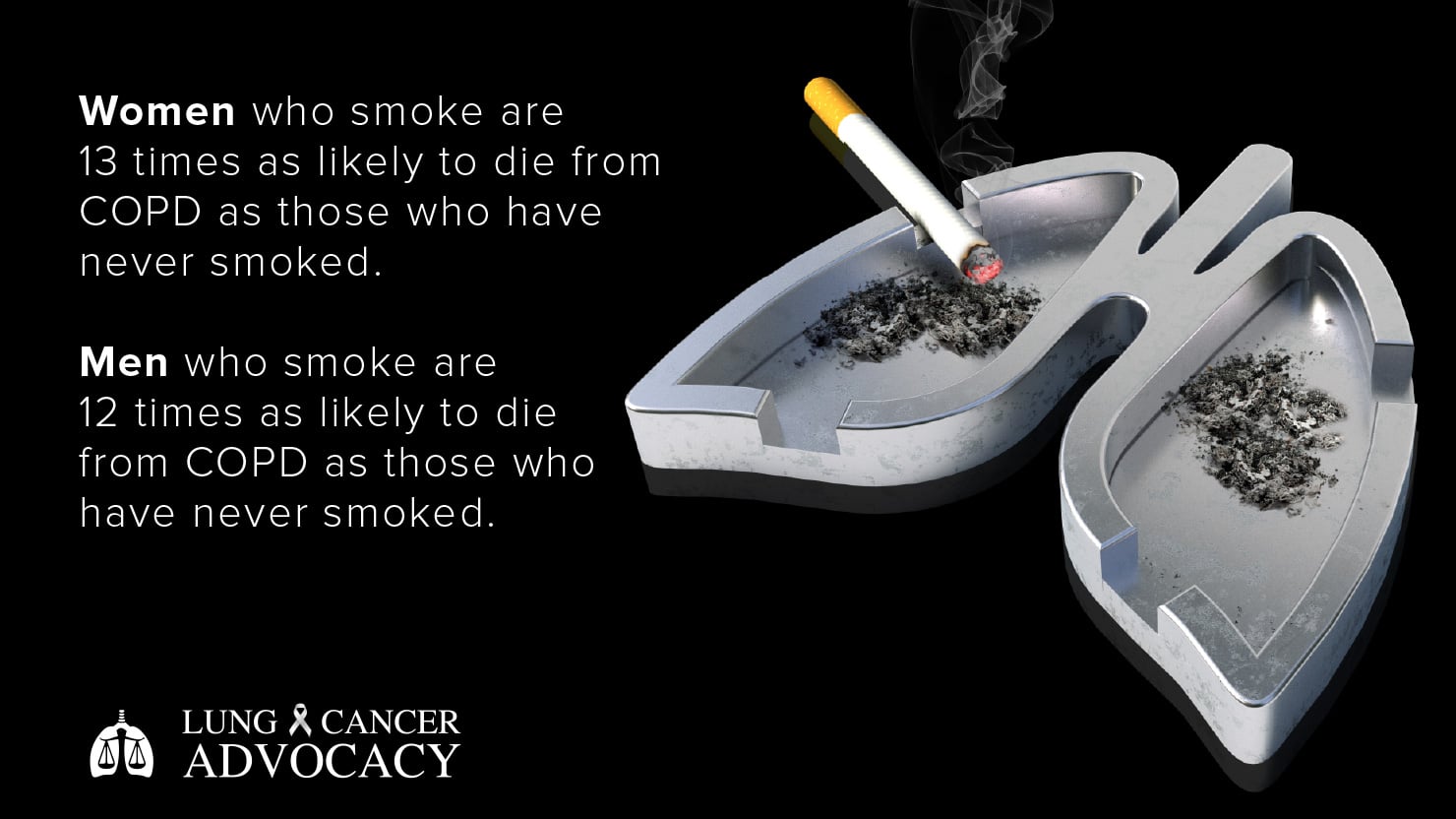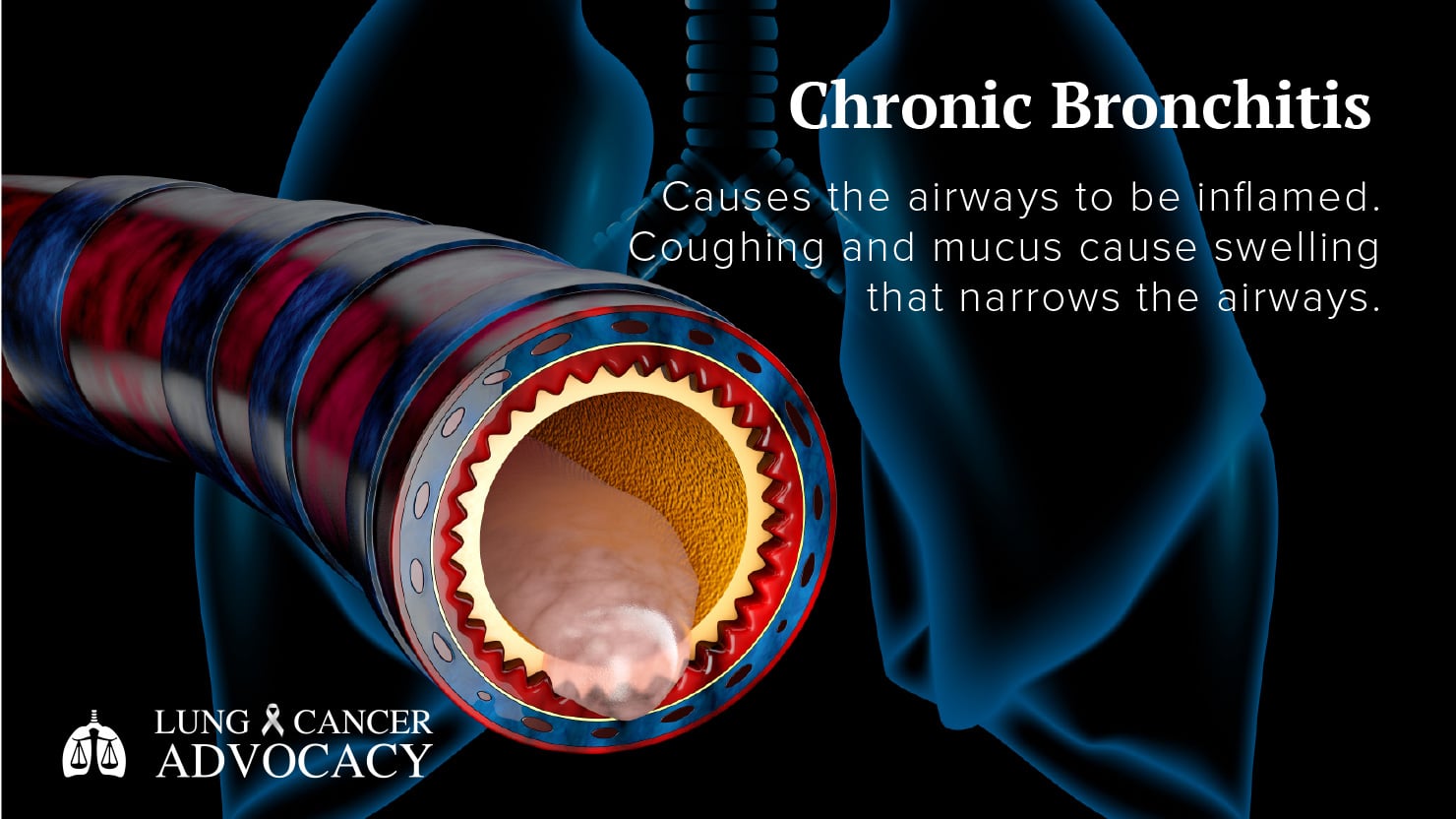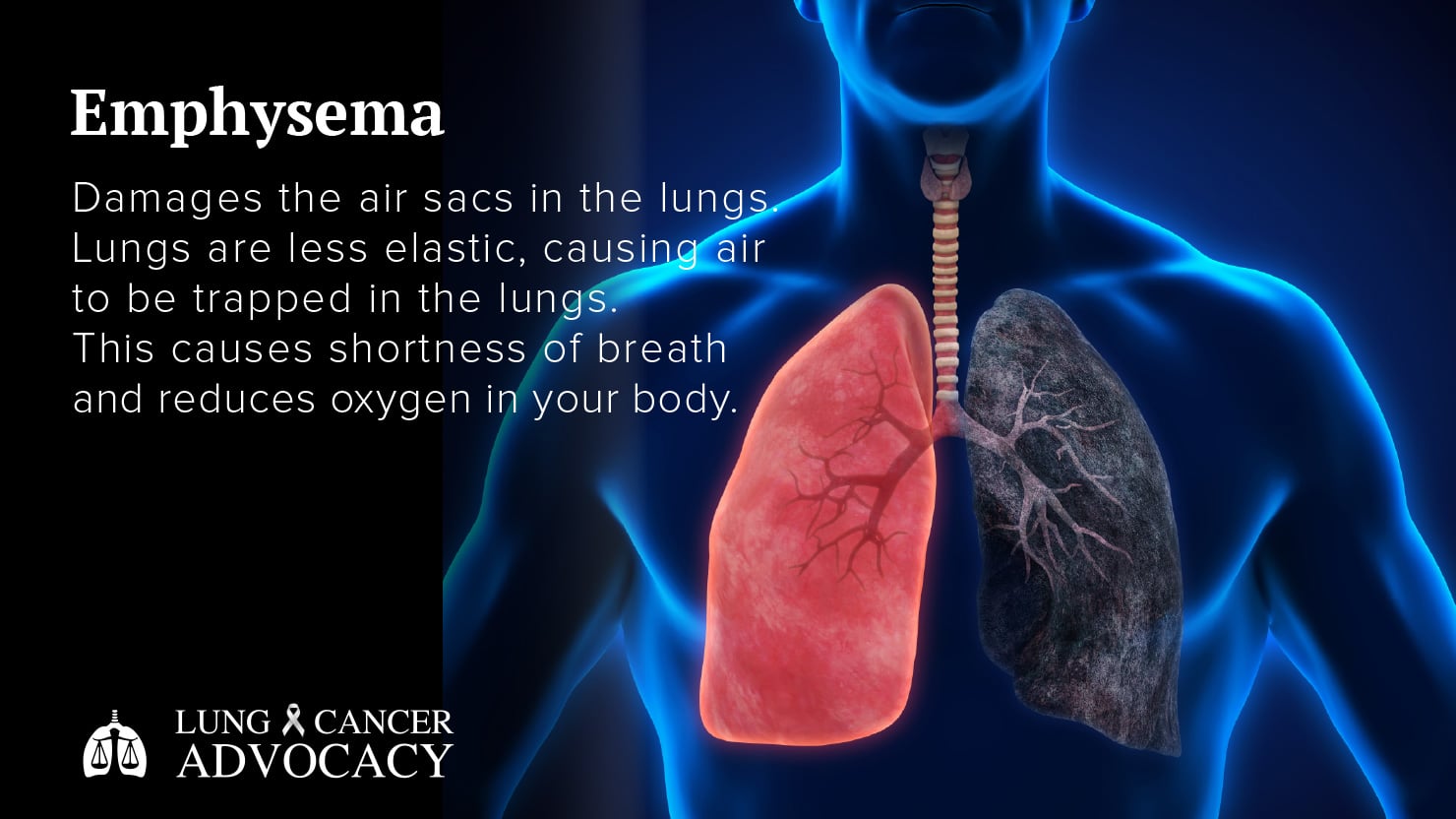Chronic Obstructive Pulmonary Disease (COPD)
Chronic obstructive pulmonary disease, or COPD, is a medical term for a group of diseases that disrupt airflow and cause breathing problems. Estimates suggest more than two million Canadians are diagnosed with COPD each year.
In 2018, estimates suggested more than 15 million adults had been diagnosed with the disease. Experts believe that millions more people may have COPD without knowing it. There is currently no cure for COPD, but there are treatment options that can help relieve symptoms.
Facts about COPD and Smoking
While there is no cure for COPD, the disease can be prevented. Tobacco smoke is one of the leading causes of COPD. Smoking combined with environmental toxins or frequent respiratory infections speeds up progression of the disease.

Tobacco products contain thousands of chemicals. When cigarettes burn, they also release chemicals into the air. Many of the up to 7,000 chemicals in cigarettes are harmful to your health. These chemicals weaken the lungs and narrow airways, destroy air sacs and cause swelling. All of these factors contribute to COPD.
If you have COPD, you should stop smoking immediately! Also, avoid being around secondhand smoke.
Information about Chronic Obstructive Pulmonary Disease
COPD is a chronic and progressive disease that affects the lungs. When your airways become inflamed or thickened, the tissue that normally exchanges oxygen is damaged or destroyed. This results in less oxygen reaching important bodily tissue and organs. It also becomes harder for your body to eliminate waste like carbon dioxide.
People with COPD experience symptoms that become worse over time. They may be diagnosed with either chronic bronchitis or emphysema – the two primary lung diseases associated with COPD.


The longer the patient goes without treatment, the more damage is done to the lungs, which impacts overall health and the patient’s ability to be active.
Who is Most At Risk for COPD?
COPD can affect anyone, but there are certain people/groups that are more at risk for developing a COPD-related disorder. This includes:
- Women
- Current or former smokes
- Patients with a history of asthma
- People 65-74 years old
- American Indians/Alaska Natives
- Multiracial non-Hispanics
There is also some evidence to suggest socioeconomic factors may increase the risk of COPD, such as education level, employment, and access to healthcare.

Symptoms of Chronic Obstructive Pulmonary Disease
Most people with COPD experience shortness of breath or other symptoms that may seem like a cold, or just a sign of getting older. However, these symptoms should not be ignored. COPD is a progressive disease, and many people do not get a proper diagnosis until later stages once damage has been done.
It is important to speak with your healthcare provider if you have any symptoms of COPD or a related illness. Such symptoms may include:
- Chronic cough
- Shortness of breath during everyday activities (dyspnea)
- Wheezing
- Producing large amounts of mucus (sputum or phlegm)
- Frequent or recurring respiratory infections
- Blue tint to the lips or fingernails (cyanosis)
- Fatigue
It is important not to wait to get medical help if you notice these symptoms. COPD can be devastating to your health and quality of life.
COPD Diagnosis and Treatment
Diagnosing COPD is relatively simple. First, your doctor will perform an examination and will review your medical records. They will look for factors that may put you at risk for COPD, such as:
- Smoking
- Exposure to secondhand smoke
- Exposure to air pollution, chemicals, or dust
- Current symptoms
- Family history of COPD
Next, your doctor will order some tests to check your breathing function and look for other possible causes of your symptoms. Tests often include:
- Spirometry: A special device that measures lung function. This test detects breathing problems and can help point doctors in the right direction.
- X-Rays: A chest x-ray can determine how your lungs look and detect any mass or abnormalities.
- Arterial Blood Gas Test: A blood test that measures the level of oxygen in your blood. It also shows how well your lungs move oxygenated blood and remove carbon dioxide.
If you receive a diagnosis of COPD, including chronic bronchitis or emphysema, your doctor will then discuss the best treatment options. Treating COPD does not cure the disease, but it can help relieve your symptoms and slow down disease progression. The most common treatment options are:
Pulmonary Rehabilitation
Pulmonary rehabilitation involves education, exercise, nutritional advice, and counseling. Being as healthy as possible can help relieve stress on your lungs and improve function.
Supplemental Oxygen
Many people with COPD need a little help breathing. That’s why doctors prescribe supplemental oxygen. This can be especially helpful during activities that require increased lung function.
Surgery
Sometimes, surgery is an option to help improve breathing and lung function. Generally, only patients with emphysema are candidates for surgery. Surgery can remove bullae (air sacs formed from destroyed airways), or reduce lung volume to help healthy lung tissue perform better.
Living With COPD
In addition to treatment, your doctor will likely recommend certain lifestyle changes to improve your overall health. Primarily, if you are a smoker or are frequently around secondhand smoke, you should stop. Smoking is a leading cause of COPD, and can contribute to lung damage and disease progression.
COPD is not a death sentence, and there are ways to improve your health and prognosis. Talk to your healthcare team about how you can slow down disease progression and live the fullest life possible.
Learn More about Lung Injuries
For many years, health experts have warned about the dangers of inhaling certain products, chemicals, and fumes. Tobacco cigarettes have been the target of many such warnings. Still, manufacturers continue to make and market these products to consumers.
There are several types of ongoing litigation related to COPD, lung cancer and throat cancer, and how they are related to tobacco products. If you would like to learn more about these lawsuits and your legal rights as a consumer, contact us today.
Lung Cancer Advocacy offers a FREE case evaluation to every potential client.
Sources: